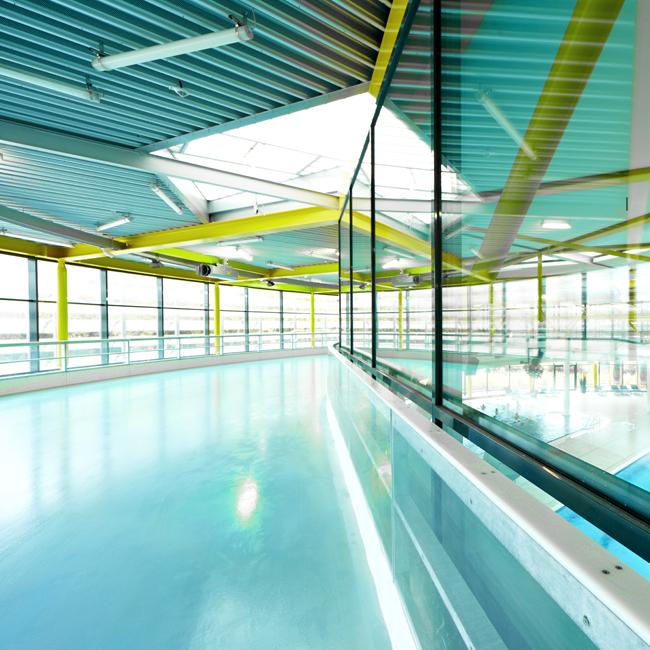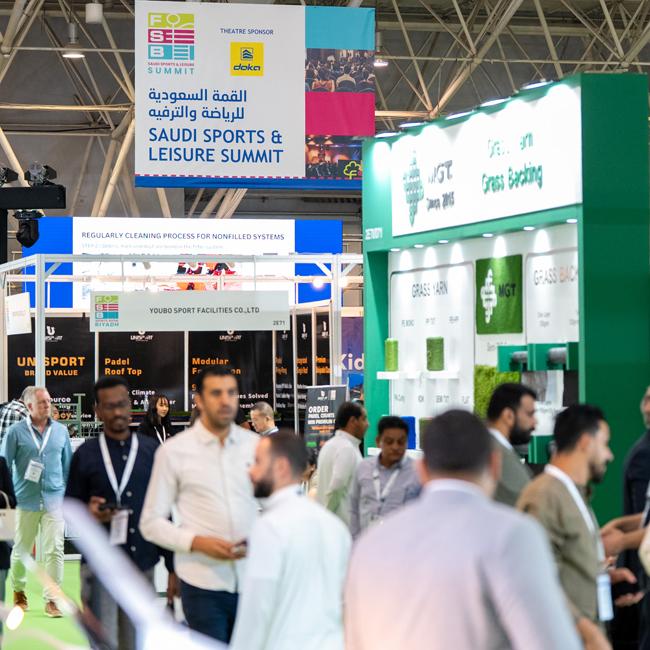Innovations in sports halls and indoor recreational centres
Sports, fitness and recreational activities and even cultural programming can be made available at a single integrated facility. New sports hall strategies and the latest innovations for sports halls and recreational facilities were discussed under the moderation of Gar Holohan, Founder and Chair at AURA Holohan Group.
Partner at FaulknerBrowns Architects Mike Hall reported on delivering combined indoor facilities for the public and for the neighbourhood by showcasing a combined swimming pool solution for leisure and professional sports. In his view, combined leisure and recreational facilities generate economic revenue while encouraging the sharing of knowledge and social interaction.
How to make traditional sports halls attractive for new user groups was discussed by Maria Keinicke Davidsen and Flemming Anders Overgaard, Owners of Keingart space activators. The architects place special focus on sports facilities combined with community activities like libraries and open gathering spaces. Openness and high visibility are crucial to them to encourage participation.
Roger Gut, Owner of MAJ architects in Switzerland, focused on modern sports halls by highlighting natural lighting, energy savings and multiple uses. The future challenge for sports halls is sustainability. Multiple uses that exceed the original sporting purpose are a powerful catalyst for sustainability. New technological developments have to be incorporated in sports halls, once they have been developed and tested sufficiently.
The sessionwas rounded off by Ronnie Koster, Global Business Manager Sports at Philips Lighting. Illustrating the challenges of lighting outdoor sports facilities, he showed how intelligent LED lighting can extend the hours of usage, reduce the glow effect and prevent glare. Future trends will even involve smartphones connected to lighting as an intelligent system for increasing revenue.

Maria Keinicke Davidsen, Flemming Anders Overgaard
photo: IAKS
Natural, hybrid and synthetic turf systems

Martin Sheppard
photo: IAKS
The 25th IAKS Congress closed with a discussion of the challenges and opportunities posed by new turf systems. Moderated by Dr.-Ing. Markus Fischer, Managing Partner at Dr.-Ing. Fischer Consult, the session focused on knowledge and expertise relating to modern turf systems and rubber infill.
Chairman of the German Turf Society Dr Harald Nonn opened the discussion with his talk on the advantages and challenges of natural and hybrid turf systems. He outlined the development of outdoor pitches from 2002 to 2017 in Germany and provided a lifecycle cost analysis for different types of pitches.
Aurélien Le Blan, CEO at Labosport in France, introduced new methods for objective measurement of natural grass and hybrid pitch performance. He explained the key factors in testing and maintaining pitches aggregated by measuring up to 25 parameters and measured in an overall percentage score.
Martin Sheppard’s presentation on synthetic sports pitch rubber infill provided information on health protection and environmental impacts. Artificial grass is needed due to the public’s expectations of sports pitches. Infills are accused of causing cancer, with children using the pitches being at special risk. As the Managing Director of Smart Connections Consultancy, Martin gave insight into the latest research done on these issues and offered solutions for dealing with public criticism.





